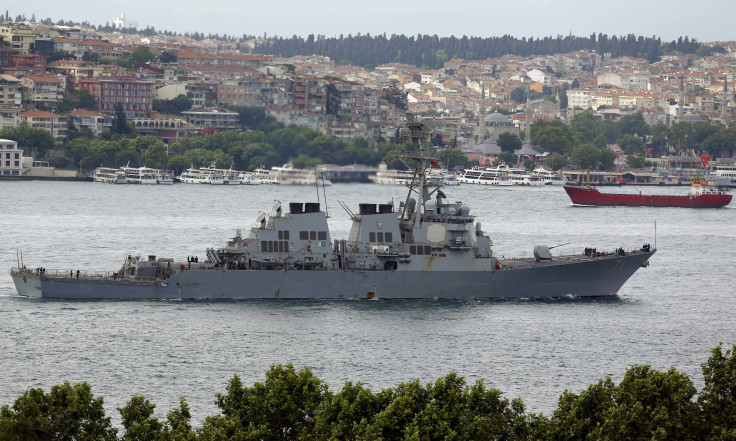US, Russian Navies Meet For First Time Since Ukraine Crisis To Discuss Ways To Avoid Accidental Clashes

The U.S. and Russian navies held talks earlier this week to discuss how to avoid accidental clashes between both forces at sea and in the air, a U.S. naval official said Friday. It was the first meeting involving naval officials from both countries since the crisis in eastern Ukraine deteriorated ties between Washington and Moscow.
Russia’s annexation of the Crimean peninsula, as well as its alleged military involvement in the Ukrainian crisis has led to the worst rift in U.S.-Russia relations since the Cold War. While Russia has stepped up surveillance of NATO’s defense capabilities over the past few months, the intergovernmental military alliance has also increased its military presence in eastern Europe, Reuters reported, adding that the two navies last met in November 2013.
“There was an open, frank and direct discussion ... about how we can better operate in the same bodies of water and avoid miscues, mistakes or miscalculations,” Reuters quoted vice-admiral James Foggo, deputy commander of U.S. naval forces in Europe, a saying. “I think that dialogue was productive.”
Foggo is currently leading a 49-ship international fleet as part of an exercise in the Baltic Sea. This year’s exercise, which is the largest so far and includes 61 aircraft and 5,600 troops from 17 NATO member nations, is considered to be a demonstration of NATO’s military strength, and intention to defend the Baltic region from potential Russian threats.
Foggo said that NATO forces have not been intimidated into avoiding the Baltic or the Black Sea.
“We are here with 49 ships right now and we are operating in areas all over the Baltic Sea,” Foggo said, according to Reuters. “I frequently operate in the Black Sea with destroyers from the Sixth Fleet, so no, they are not no-go areas, and we will continue to operate in both places.”
NATO’s increased number of military drills across eastern Europe in response to alleged Russian threat also raises possibility of an unintentional collision, either by aircraft, or at sea, Russia’s Sputnik reported.
Late last month, a Russian fighter jet and a U.S. Air Force reconnaissance aircraft reportedly came within 10 feet of each other while flying at high speed in international airspace over the Black Sea. A similar incident took place in April when a U.S. RC-135U aircraft flying a routine flight over the Baltic Sea was intercepted by a Russian SU-27 Flanker.
The European Leadership Network, a London-based think tank, said in a report last November that nearly 40 potentially dangerous incidents involving Russian and Western militaries took place since the annexation of Crimea by the Russian Federation in March, 2014.
“These events add up to a highly disturbing picture of violations of national airspace, emergency scrambles, narrowly avoided mid-air collisions, close encounters at sea, simulated attack runs and other dangerous actions happening on a regular basis over a very wide geographical area,” the report said.
© Copyright IBTimes 2024. All rights reserved.












